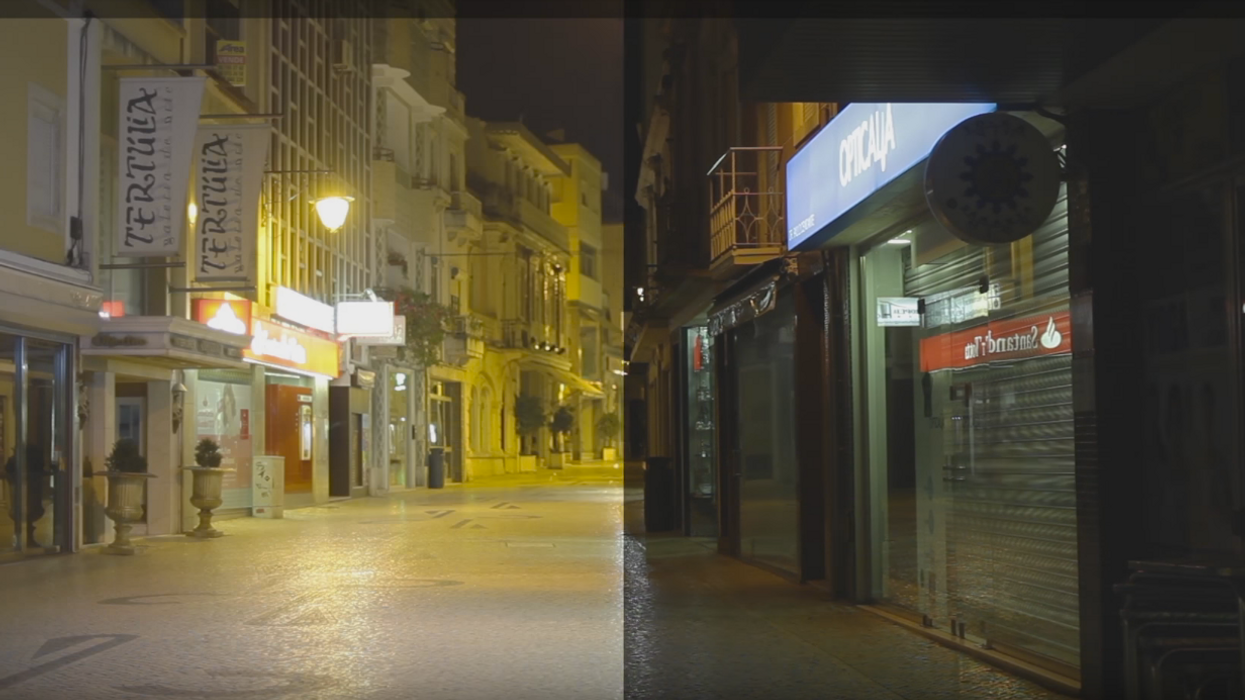Shooting Images in Low Light? 4 Important Things to Keep in Mind
Just because there's not a whole lot of light doesn't mean you can't shoot.

Shooting in low light situations is inevitable and many times unavoidable, so knowing how to get a proper exposure without degrading the image is incredibly important if you want your work to look pretty and professional. In this video, DP JP Caldeano gives some tips on how to solve issues of low light, as well as what factors play a role in helping you avoid capturing noisy footage.
Here are the four things Caldeano talks about in the video that are important to know when shooting in low light. Keep in mind that shooting in these kinds of situations is tricky, because when you solve one issue another one pops up—it's like cinematic whack-a-mole. In fact, each and every thing listed below comes with effects that you may not want for your image, like noise levels, image blur, and bokeh, but they do help make it possible to shoot in low light situations.
ISO
Shooting at a higher ISO will make your camera's sensor more sensitive to light, but it will also make the image more grainy. You can usually get away with bumping it up from, say, 100 to 400 without getting a whole lot of grain, but anything higher than that you might be able to see your image degrade a bit. Of course all of this depends on the kind of sensor your camera has; a Full Frame sensor can handle much higher ISOs than a Micro 4/3 sensor without increased noise. (Ex: Micro 4/3 at ISO 800 = Full Frame at ISO 3200)
Shutter speed
Shutter speed measures the amount of time your camera's sensor is exposed to light. The faster the shutter speed (1/1000, 1/500, etc.), the darker the image will be. The slower the shutter speed (1/8, 1/2, etc.), the brighter the image will be. But solving low light issues isn't as simple as setting your shutter speed low enough to get a decent exposure, because the longer the shutter is open, the more motion blur your image will have. Traditionally you'll want the denominator of your shutter speed to be about double your frame rate, for example, if you're shooting at 24fps, your shutter speed will be 1/50, but combating low light issues may lead you to decreasing it a bit to allow a little more light in.
Lenses
The size of your aperture is another factor in how much light is let into your camera. Lenses with a wide aperture (f1.2, f1.4, etc.) are better suited for low light situations than those with a narrow aperture (f22, f16, etc.), because they allow more light into the sensor. Prime lenses tend to have wider apertures than zooms with very few exceptions, like with the Sigma 18-35 f1/8 zoom lens. Keep in mind, though, that aperture affects your depth of field: the wider it is, the shallower it gets, resulting in bokeh. Maintaining clear, consistent focus may become an issue as well.
Lighting
Maybe this should've been the first thing on the list, because, you know, it's the most important factor in low light situations: light. Yes, okay—there may not be a whole lot of light in the place you're shooting (otherwise, what are we even talking about?), but "not a whole lot of light" is still some light. Try to shoot near any kind of light source you can find: street lamps, neon signs, smartphone flashlights, windows with light coming out of them (but don't be a creeper), anything that can help add a little more illumination so you don't have to rely on camera settings so heavily.
What are some tricks you use to shoot in low light? Let us know in the comments below!
Source: Cinematic J
















